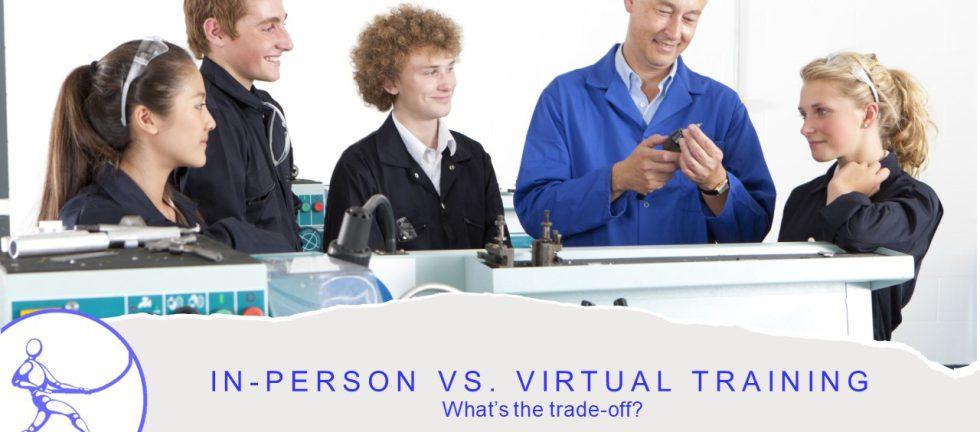Our Physical and Cognitive Demands Analysis workshop will be running next week. In today’s age of virtual and online training, why would anyone travel to Cambridge to participate in an in-person workshop?
Don’t get me wrong…I believe there’s also a place for virtual and online training, and we offer both. We have an excellent online program for employees with newly installed sit/stand furniture. We have created virtual leader-led programs for lifting and for office ergonomics. These programs allow us to reach people who would not be able to have face-to-face contact with one of our ergonomists. We’ve worked really hard to make the programs “hands-on” and “interactive”. They are not presentations that you just sit through.
We have a pretty firm stance on the difference between training and education. Training is meant to teach people to do something new. Education is meant to provide knowledge or awareness of something new. If you want to be able to complete a PCDA, you need training. You need practice in the various skills required to complete the assessment.
I find the analogy of elementary school sex education helpful. No parent wants their child to participate in sex training. We intuitively understand that education, in this context, is what we’re going for. But when we want to teach our child to safely use a carrot peeler, we provide training; we describe the hazards, we show the child how to use the tool, and we let them try it while we watch and provide feedback. Would you train your child to use a sharp tool, virtually?
We’ve been asked if we will offer the PCDA workshop (and some of our other sessions) virtually. During the lock-down, we ran this course virtually because our interns needed it – we sent out a huge box of equipment and props prior to the session. However, we don’t plan to offer it this way again, in the near future. Here are a few things that are lost in a virtual setting:
– How to use a force gauge to measure push/pull forces. I can certainly explain the process, and, if participants have a gauge and something to push or pull against, they can try it out during the course. But how would I, as a facilitator, give them feedback that they are measuring correctly? How can I see what they are doing and confirm that the technique is good and the measurements are accurate?
– Many of the activities in our course are run in small groups. For example, force matching requires tests with multiple users. Virtual participants would likely be sitting in a room by themselves; they would have to act as the analyst (guiding the measurement process) AND two different workers (completing the task). Each participant would need to round up 2 extra people for some sections of the course, to learn effectively.
– In the course, participants learn to take photographs of volunteer workers performing actual tasks…they move around the room to identify the best place to stand, and they learn how to interact with a worker without interfering with production. These activities would be difficult to set up virtually.
– To make virtual training “hands-on”, participants need to gather props before the course, and they need to set up their webcams so the facilitator can see what they’re doing. These are very big “asks” for home office workers.
– Breakout rooms can work, but not as effectively, or as efficiently, as face-to-face communication. Breakout rooms require more time to allow participants to get comfortable with each other. Unfortunately, participants often use breakout rooms as an opportunity to step away from their screens, leaving the other participants without a discussion partner. We’ve found that we cannot cover as much material, or as deeply, during virtual training.
Many of these challenges will be overcome with future technology. If we could run training in a comfortable virtual reality setting, and if we could develop connected force measuring technology, and if we could deliver a set of standard “job simulation props”, I can imagine an effective PCDA course. The facilitator could understand and provide feedback about what each participant was doing. Participants could interact with each other directly (virtually). And we could set up jobs for participants to observe, virtually. But we are not there yet.
Virtual training is convenient. If I lived in a remote location, I would be thrilled to have the opportunity to participate in virtual training on a topic that I couldn’t access otherwise. Perhaps I’d approach it as “virtual education”, and I’d plan to get the practice and feedback that I need to develop skills, after the session. However, I no matter how hard we try, virtual training is not currently a good substitute for in-person training.
Register by Wednesday for next week’s PCDA workshop in Cambridge!


